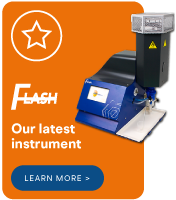Flame Photometers: The Essential Tool for Precise Elemental Analysis
- The BWB Team
- Jun 13, 2023
- 2 min read
Updated: Oct 12, 2023

Flame photometers (FPs) have revolutionised the routine determination of ppm concentrations of key elements like barium, calcium, lithium, potassium, and sodium in solutions. With their calibrated settings and remarkable stability, FPs can maintain accuracy over extended periods, drifting as little as 1% per hour of operation.
Traditionally, standard flame photometers achieved accuracies of 30 ppm for barium, 15 ppm for calcium, 0.25 ppm for lithium, and 0.2 ppm for both potassium and sodium. However, advancements in techniques and technologies, including electronic amplifiers, have pushed the boundaries further. In the past decade alone, FPs have achieved detection levels as low as 0.02 ppm for both potassium and sodium, improving accuracy by an entire order of magnitude.
The applications of flame photometers are particularly invaluable in water analysis. They play a crucial role in determining the presence of sodium, potassium, and lithium.
The versatility of flame photometers is remarkable. These devices can utilise various fuels, including propane, butane, natural gas, and even Liquid Propane Gas (LPG).
FPs find extensive use beyond water analysis. Industries involved in food processing rely on them to monitor nutrient levels in their products, ensuring compliance with governmental standards and accurate labelling. While FPs may not directly test vitamin content, they assure manufacturers that their "low-salt" or "low-sodium" products such as soy sauce truly adheres to the packaging claims.
Furthermore, FPs are indispensable in monitoring water quality. Municipal waterworks heavily rely on these devices to assess effluent being reintroduced into the environment and water retained for reuse within communities. The importance of accurate testing is highlighted by the potential for substantial fines and legal consequences for operators found in violation of specifications.
Mining, including salt mines and potassium mines, benefits from flame photometry as well. It enables the determination of sodium, calcium, lithium, and potassium levels in rocks, metals, alloys, minerals, ores, and ceramics. Similarly, farming relies on FPs to understand soil conditions, plant constituents, and the quality of the available water supply. In the dairy industry, flame photometers quantify minerals present in milk.
Moreover, FPs have found widespread use in the food and beverage industry, sugar industry, nuclear power stations, petrochemical cracking plants, and gas and oil fields. The introduction of the BWB XP version in 2013, capable of simultaneously testing all the familiar five elements, has significantly increased their adoption. This advancement has made the process and analysis easier and faster.
The affordability and speed of testing ensure that flame photometry remains a leading technique for the foreseeable future. Additionally, the user-friendly nature of BWB FPs allows professionals to become proficient quickly, adding to the already numerous benefits.
When you're ready to enhance your laboratory's capabilities or join other progressive industries embracing this technology, BWB is here to support you. Contact our experts, and they will guide you through the available options. We look forward to hearing from you and helping you elevate your business to new heights.







